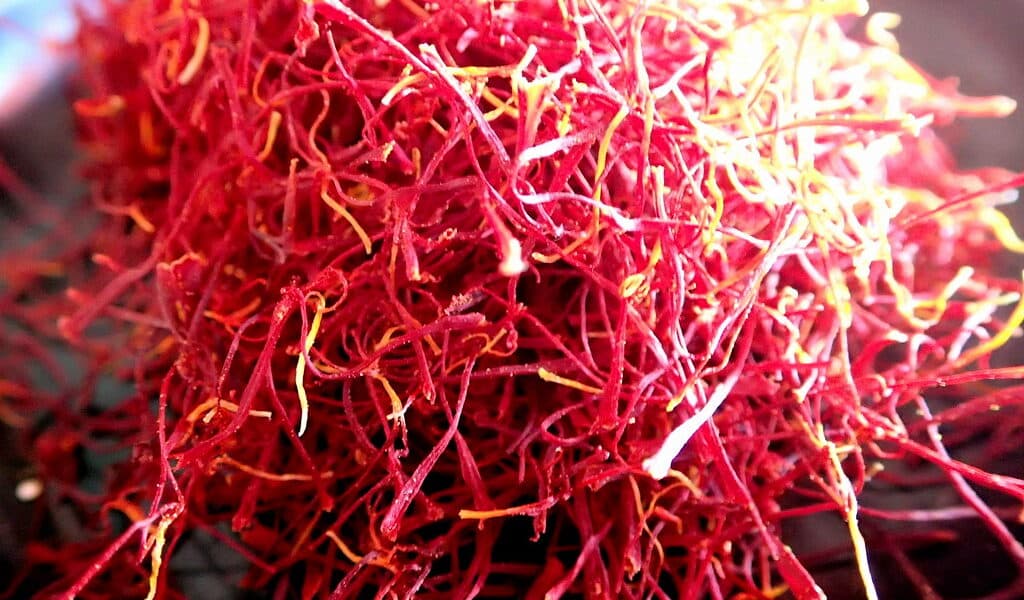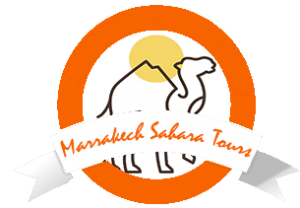Moroccan Saffron Harvesting & Farm Tours: An Insider’s Guide to the Spice Production Process
Saffron has been integral to Moroccan cuisine, culture and livelihoods for centuries. Known as “red gold” for its high value, saffron imparts a signature flavor and golden color to iconic national dishes like tagines, couscous and bastilla. Beyond cooking, it adds vital income for rural villages through the intensive harvest and production carried out through generations.
For those passionate about spices, food or simply immersing in local cultures, visiting a Moroccan saffron farm and tour offers an insider experience during the short annual harvest each fall. Read on for an in-depth guide to planning an authentic agritourism saffron tour while discovering how growers cultivate and produce the world’s highest quality saffron.
Overview of Saffron Production in Morocco
Morocco reigns among the top three saffron producing countries globally thanks to ideal climate conditions concentrated in the fertile Sous Valley surrounding the market town of Taliouine. Nicknamed “The City of Saffron”, over 90% of the nation’s saffron originates from this region. In a typical year, Morocco’s saffron output averages around 12 tons – trailing only Iran and India – but far outpaces rivals in quality.
Saffron derives from the hand-collected delicate red stigmas from inside each vivid purple crocus blossom of the Crocus Sativus variety. After families sow specialized corms, narrow green leaves soon sprout from the hardy bulb-type structures. Around mid-autumn, an explosion of flowers bloom for approximately one month during the rainy season from late October through November.
This cues the start of intensive manual harvesting as women wake up well before dawn to pick newly opened crocus flowers boasting bright crimson stigmas. Careful hand selection only gathers unblemished stigmas avoiding lower quality yellow pieces. The short 10-14 day window when blooms reach peak vividness requires prompt daily harvesting across every field to maximize yields.
Typical Saffron Production Timeline in Morocco
- August: Corms planted
- October – November: Rainy season triggers flowers blooming for around one month
- October 15 – November 15: Intensive daily harvest period
- November onward: Post-harvest activities like drying, grading saffron
After the harvest frenzy concludes, the sorting, drying and packaging processes extend over winter to ready saffron for sales and export. Women-run village cooperatives play a vital role assisting with these crucial post-harvest activities on top of advanced tasks like marketing to overseas buyers.
From Flowering Fields to Finished Powder: Inside Saffron Production
Producing saleable saffron requires extensive manual effort across the entire process spanning many months. Saffron’s high retail cost directly correlates with the sheer human labor needed start to finish – from planting corms to separating delicate strands from over 200,000 flowers to yield just one pound of finished spice.
Here’s a glimpse into what goes into cultivating and harvesting Morocco’s exceptionally high grade Taliouine saffron through every key step along the way:
Cultivation & Harvest
- August: Specialized corms planted which sprout green leaves soon after
- October – November: Rain triggers flowering for around one month
- October 15-November 15: Intense daily hand picking of newly opened purple crocus blooms
- Select only flawless deep red stigmas while avoiding yellow pieces
Post-Harvest Processing
- Stigmas detached from other flower parts then dried over wood-burning stoves
- Dried saffron carefully sorted by color intensity to separate quality grades
- Categorized from dark scarlet red “coupé” to medium “mancha” to pale yellow “boufeggous”
- Final product carefully packaged into sealed glass vials as high grade Taliouine saffron powder
Lab Testing & Quality Control
- Samples from each village cooperative’s batch lab tested for safranal content (flavor potency) and other scientific quality indicators
- Chemistry results enable category classification from premium grade to everyday grade
- Top results qualify for specialty labeling like “Taliouine Protected Geographical Indication”
While small mechanization now assists with tasks like corm planting and stigma separation, hands still conduct over 80% of the total work. But this artisanal process enables Moroccan saffron like Taliouine to consistently rank the highest globally for flavor, aroma, coloring capacity and overall quality year after year.
Saffron’s Significance in Moroccan Cuisine and Culture
In Moroccan cooking, saffron adds an iconic flavor and vibrant golden-orange hue integral to numerous signature dishes:
- Tagines: Saffron stars in classics like lamb tagine with prunes, chicken tagine with olives
- Couscous: Sweetened saffron broth ladled over vegetables and meat
- Bastilla: Ground saffron integral to the sweet savory filo pies stuffed with pigeon or chicken
- Saffron Rice: Strands soak flavor into festive yellow rice typically served at celebrations
But beyond famous dishes, saffron also graces refined tea culture in homes symbolizing hospitality. Generations ritually prepare a bitter brew using local saffron infused honey sweetened after cooling with loukoum candy. This special saffron tea gets elegantly poured to welcome esteemed guests. Moroccans also add a pinch elevating spearmint tea, with subtle floral aroma lifting the quintessential social beverage to new heights.
Through cuisine and social traditions, saffron threads a common golden theme amplifying celebrations, connecting everyday community and honoring visitors alike throughout life’s special moments. The distinctive notes also recall taste memories stretching back through generations who similarly gathered together over saffron-infused dishes.
Saffron Cooperatives Uplifting Rural Villages
Over 40 rural villages sustain solely on saffron farming and artisanal production methods carried out through all-female cooperatives scattered around the Sous Valley. These saffron collectives embody progress retaining local wisdom while empowering women as leaders managing cultivation of an iconic national artisanal craft.
They provide members critical training on harvest best practices to maximize highly seasonal yields during the short late-October through mid-November window. The organizations also lead post-harvest work coordinating activities like drying, sorting into quality grades and creating unique signature spice blends to diversify products. With limited local employment options beyond subsistence farming, cultivating one the world’s most precious spices enables rural areas to support generations of families through the cooperative model.
Saffron facilities additionally facilitate direct relationships with overseas wholesale buyers and boutique retailers mainly across Europe, Asia and the Americas to sell finished product abroad. By handling exports directly rather than working through intermediary middlemen, cooperatives return substantially more income straight back to fund local public works programs. Some well-run organizations also set aside portions of proceeds to finance initiatives like establishing local handicrafts businesses to diversify women’s income sources beyond just harvesting wild crocus flowers.
While organizations like Tiwlika Cooperative with over 100 members sorts and sells top grade “Taliouine Saffron” at premium prices to famous chefs globally, smaller collectives still rely on middlemen to connect internationally. So crafting policies that offer all rural coops equitable access to sell globally helps villages unlock their full economic potential by exporting high-quality saffron at fair prices year-round rather than only cashing in for two weeks annually during harvest season from local middlemen.
Top Saffron Farm Tour Regions and Cooperatives to Visit
During the short late October through mid-November harvest, visitors can immerse in Agadir’s vibrant fields during an insider farm tour. Some facilities even arrange tours outside the harvest, but witnessing traditional practices contrasted against brilliant purple flowering backdrops proves unforgettable.
The Sous Valley provides picturesque bases to explore the heart of Morocco’s saffron belt. But each village boasts particular highlights offering unique perspectives into harvest traditions, cooking, and cooperatives uplifting local economies.
Taliouine & Smimou
- Taliouine: Historic capital of global saffron production thanks ideal growing conditions
- Smimou: Scenic base in tiny rural village amidst sea of purple flowers
- Tiwlika Cooperative: Pioneering 100+ member female-run collective producing premium Taliouine saffron
Taznakht
- Lively weekly Berber souk showcasing valley culture and wares unlike anywhere
Agdz
- Explore kasbah ruins and wander palm oasis in ancient caravan town
Aoulouz
- 360 degree views overlooking endless purple flowers blanketing surrounding slopes
Taroudant
- Post-tour strolling around red-hued walls of alluring walled old city
The best homebase location depends on preferences and tour customization selected. Taliouine makes an optimal central hub for discovering the land that built a global saffron empire with plentiful sights. But pairing rural villages like Aoulouz for bloom immersion alongside contrasting experiences in historic areas like Taroudant creates an unforgettable glimpse into Morocco’s diverse facets.
What to Expect While Visiting a Saffron Farm on Tour
 Opting for personalized private tours over large group excursions enables a more intimate look at village life and harvest rituals. The flexible cadence also allows customizing locations based on unique interests outside just seeing fields blanketed in purple flowers.
Opting for personalized private tours over large group excursions enables a more intimate look at village life and harvest rituals. The flexible cadence also allows customizing locations based on unique interests outside just seeing fields blanketed in purple flowers.
An authentic saffron agritourism tour delivers plenty of memorable moments to discover regional harvest traditions:
- Taste signature dishes like saffron risotto spotlighting complex flavors
- Sip sweetened saffron tea during illuminating talks with welcoming farming families
- Marvel at brilliant crimson threads contrasting against purple blooms in Taliouine’s iconic fields
- Observe cooperative women masterfully sorting through mounds of stigmas while categorizing quality grades
- Shop for high-quality saffron sourced directly from the source to bring home
Packing appropriately helps make pre-dawn wakeup calls and open-air travels more enjoyable. The grounds surrounding villages tend to get muddy after autumn rains. So waterproof shoes prove essential along with layers to peel as temperatures fluctuate.
Booking tours through community-focused agencies like Visit Our Saffron Village promotes rural women’s cooperatives directly by channeling visitor funds into female-centric public infrastructure projects. Avoid operators vague on tour details or lacking substance beyond basic field visits. Thoroughly vet potential tour outfits to ensure aligning with responsible partners like Growinn Saffron committed to celebrating regional traditions sustainably. This uplifts Taliouine citizens via ethical cultural exchange for generations instead of prioritizing profits through exploitation.
Visiting Saffron Cooperatives Year-Round
The tiny administrative village Taroudant in the Souss plains holds the distinction as the capital of Moroccan saffron production. As a result, numerous cooperatives bases around the fertile oasis town always welcome visitors to learn about their work empowering rural women and communities.
These intimate experiences while less flashy than fall’s brilliant harvestingfields still educate on ancient production methods. Visitors gain insight into complex post-harvest activities like laboratory testing for quality before worldwide export occurs. Guests can also inquire directly with cooperative leaders regarding tapping into specialty import and distribution contacts abroad to access premium Taliouine saffron themselves.
While arranging tours during the late October harvest transports guests straight into the action, visiting saffron cooperatives like Crocus & Co in Taroudant any time of year provides unique off-season adventures. Groups experience hand-on workshops deciphering between various quality grades and learning iconic local dishes starring saffron as the highlight ingredient. Plus sore hands get a reprieve enjoying generous seasonal tastings rather than actually laboring away under the rising sun plucking delicate crimson threads!
Saffron’s Significance Past Cooking: Culture, Community & Livelihoods
Beyond infusing iconic dishes, saffron interweaves through Moroccan cultural identity on multiple levels symbolizing generosity, refinement and vibrant living. Rubbing precious powder between the fingers when preparing customary mint tea sweetened with amber honey and loukoum candy signals an elegant hospitality ritual carried through generations. Offering saffron tea remains a sign of respect welcoming honored guests into homes as Esteemed visitors represent blessings from Allah.
Saffron also threads together far-flung diaspora communities through shared tastes and food memories unique to Moroccan cultural heritage. The distinctive aromatic flavor recalls generations past who similarly gathered together community over savory tagines and sweet bastillas amplified by golden saffron cultivated in the distant homeland.
Plus by continuing steadfast focus producing exceptionally high-quality saffron through village all-female cooperatives instead of exploiting quick profits from sous mass tourism, rural areas reinforce commitment to traditional cultural values prizing quality craftsmanship and community over pure industrial efficiency. Employing sustainable approaches that honor inherit wisdom enables rural locales to prosper through the global saffron trade for generations while resisting disruptive forces risking erosion cultural practices refined over centuries.
So beyond the fields blanketed with brilliant purple flowers or signature flavor blending with cumin and cinnamon, saffron infuses Moroccan heritage far beyond the kitchen by connecting people across geographic and generational lines through a common thread: deep pride in maintaining exceptional quality production supporting livelihoods stewarded collectively using time-honored harvesting knowledge unique to Morocco’s rich traditions.
Planning Insider Saffron Tours Supporting Local Economies
While many operators offer tours centered around fall’s visually stunning bloom season, visitors focused on cultural exchange should consider scheduling trips collaborating directly with rural women’s cooperatives outside peak months. This ensures travel dollars get reinvested back into villages funding local community growth programs prioritizing female empowerment and leadership.
Responsible community-based social enterprises like Al Mansouria offer transformational Marrakech day trips integrating urban sightseeing with visits to a historic Jewish saffron farm supporting ethical rural tourism year-round. Mansouria’s visionary female owner partnered with La Maison du Safran to create sustainable employment for a struggling village through highlighting cultural heritage preservation combined with training women in hospitality and marketing artisanal goods to tourists.
Mansouria trips build connections between tourists and Often marginalized rural areas spotlighting proud ancient Jewish agricultural traditions that cultivate high quality saffron respecting rituals refined over five centuries in Morocco. Visitors gain tangible understandings on saffron’s significance bonding past generations while inspiring hope for youth to honor roots rather than abandoning villages for modern cities. They witness cooperate president Jacqueline Nicholls passion educating guests on creating sustainable livelihoods through culturally empowering ethical tourism showcasing community talents perfecting iconic spice harvesting over centuries.
While fall farm tours provide scenic splendor unlocking iconic vistas drenched in brilliant crimson threads, sustainable tourism pioneered by social innovators like Mansouria seeds deeper purpose exposing human resilience and hospitality. Their efforts champion progressive models that deconstruct power dynamics perpetuating inequality by boldly reimaging cultural narratives as strengths rather than deficits requiring external aid interventions. This community-centric orientation lifts up dignified voices guiding cultural renewal reviving time-honored customs on local terms to uplift marginalized rural groups through ethical commerce.
Bringing Home Morocco’s Saffron Direct From the Source
Nothing caps off an eye-opening agritourism saffron tour better than bringing back a personal harvest as an evocative edible souvenir. While specialty shops in places like Essouira sell high-end saffron, purchasing directly from a rural women’s cooperative while visiting Moroccan saffron fields enables cherished gifts benefiting local economies the most.
Seeking out village cooperatives around the Sous Valley that export premium “Coupe” grade offerings guarantees obtaining the world’s best saffron bursting with maximum freshness and potency too. Opt for striking proprietary signature tin packaging showcasing unique visual designs that sidestep generic clear glass containers lacking personality.
Comparing production dates and speaking directly with cooperative presidents about their particular village’s size, harvest yields, and post processing approaches also ensures clarity around sourcing and women-centric business practices supporting the sale.
While bargain 50 dirham vials in the Marrakech souks might appear temptingly affordable, the quality and freshness remains questionable at best from old stock. Investing 200-300 dirhams into specialty grade Taliouine saffron tapped from this year’s bountiful fields channels 3-5 times more money directly back into rural community public works projects uplifting the female saffron harvesters themselves.
So for cooks seeking ultra premium Moroccan saffron to stock home pantries plus meaningful travel momentos that tangibly improve grower livelihoods, visiting cooperatives ingeniously coupling timeless farming wisdom with social progress defines conscious consumerism at its finest.
The alluring giant yellow stigmas beckoning seductively from market stalls appear innocuous enough. But looks deceive. By understanding exactly what accounts for genuinely high quality saffron – from soil chemistry nuances influencing flavor, reputable regional appellation labels certifying excellence, ways “flowering harvest” seasonality concentrates precious aromatic oils – discerning aficionados source distinctive Taliouine saffron thoughtfully while supporting rural female empowerment through ethical supply chains directly tied to the land and community.




